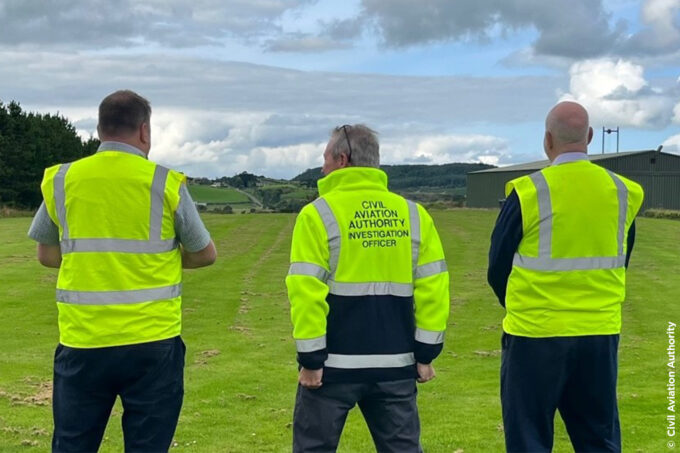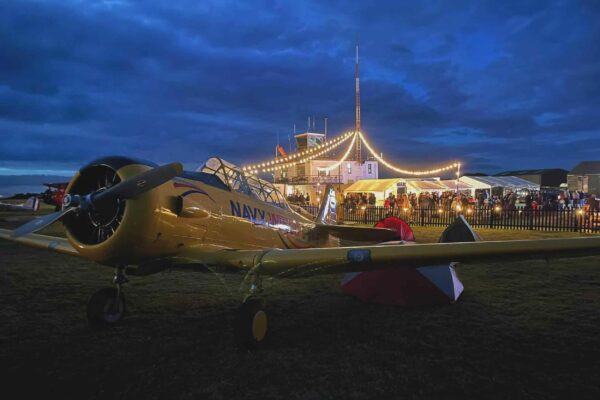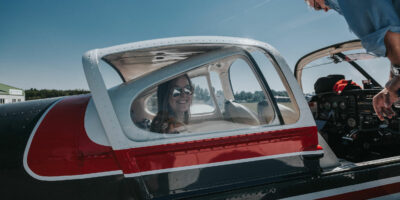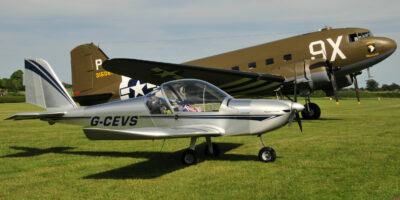
We may not always think about this while doing it, but flying is quite a compliance-based activity. I cannot think of another pastime that has so many regulations, particularly ones that have a habit of changing.
With the average private pilot devoting around 30 hours a year to flying, there will probably be areas of understanding that are more historic belief, or accepted wisdom from peers, than definitive knowledge of the legal provisions. While to an extent this is inevitable, we need to be careful about relying on assumptions – ignorance of the law is no excuse, and the responsibility to be legal ultimately rests on you as the pilot in command.
Ask a typical instructor and they will likely have a few stories to tell about pilots they have encountered who were – usually without knowing – flying outside the privileges of their licence or not in compliance with the regulations for their flight. Based more on anecdote than research, here are a few issues that sometimes come up.
Is your licence and rating signed?
1 It might seem obvious, but a pilot licence must be signed by the holder at the appropriate entry on the licence document. Except for the Light Aircraft Pilot Licence (LAPL), all licences also need a valid rating entry applicable to the aircraft flown. The rating must be within the validity date and have been signed on the certificate of revalidation page by an appropriate examiner. In the case of the single engine piston (SEP) or touring motor glider (TMG) ratings, the certificate of revalidation may also be signed by an instructor authorised under FCL.945 and who has completed the applicable refreshing training with the licence holder. The experience requirements for SEP and TMG are well established. However, if you need a reminder see FCL.740.A, paragraph (b).
For the LAPL, the requirements are slightly different to the ratings on a PPL or higher licence. The LAPL flight experience requirement is ‘rolling’, meaning you count back from the day of the flight to ensure you meet FCL.140.A, or FCL.140.H for helicopters. If you do not, a proficiency check with an examiner is required. Another key difference is that the certificate of revalidation is not signed. Due to being printed in a standard format, LAPL licence documents will normally have a certificate of revalidation page, but this is left blank – reference to logbook records should be made when counting experience.
Have you done the right training?
2 The requirements for differences and familiarisation training between aircraft of the same class or type are quite extensive and sometimes catch people out. The distinction between differences and familiarisation training is explained in GM1 FCL.710. Differences training should always be recorded in the pilot’s logbook and signed by the applicable instructor.
For the SEP class, electronic flight instrument system (EFIS) and single lever power control (SLPC) are less obvious difference training items, alongside well-known ones such as tailwheel or variable pitch propeller. Common sense also comes into this – even if differences training is not required for some new models or features, self-study or voluntary training will normally be appropriate. For more details see FCL.710 and the UK type rating and endorsement lists. Note that for the multi-engine piston (MEP) class, it is a requirement for differences training between every model of MEP – for example going from a Duchess to a Seneca.
For NPPL holders the requirements for differences training are listed in Schedule 8, Part 2, chapter 2 of the Air Navigation Order 2016, under the Microlight and SSEA class ratings. The list is subtly different from that for the SEP class, with some additional items such as a maximum indicated cruising speed of more than 140kt.
When the microlight category was raised to a maximum weight of 600kg several years ago, the differences training requirements were expanded, so check if unsure. LAPL, PPL and higher licence holders may fly microlights on their SEP rating, but in accordance with ANO Article 150, must also receive the differences training specified in Schedule 8, Part 2, chapter 2 for a microlight class rating.
Part-FCL introduced the Aerobatic Rating in 2018. Previously there was no formal qualification for aerobatics in the UK and there might still be a few individuals unaware of the requirement. If flying aerobatics under the privileges of a Part-FCL licence, you are required to hold the rating.
Are you current enough to carry passengers
3 To carry passengers, you must have completed in the relevant class or type three take-offs, approaches and landings in the preceding 90 days. If carrying passengers at night, one of those take-offs and landings must also have been at night. Holders of an Instrument Rating are excused the latter requirement.
Foreign aircraft and licences
4 Many owners and operators of foreign registered aircraft based in the UK will be familiar with the ‘dual qualified’ requirement that came in several years ago – if you owned and operated a foreign registered aircraft based in the UK, you had to have an EASA licence with equivalent qualifications to that of your licence issued by the state of registry. Since Brexit, the status of this requirement in the UK sometimes causes confusion.
The ‘dual qualified’ requirement still applies, and you must now specifically hold a UK Part-FCL licence. As of 31 December 2022, a licence from an EASA member state is no longer acceptable. The implication being that if you live in the UK and base an aircraft registered in an EASA member state in the UK, you need to hold both a UK and EASA Part-FCL licence.
The equivalent European requirement would also apply to a UK registered aircraft based in an EASA member state – you would need both UK and EASA licences. See the CAA website for the process of obtaining a UK Part-FCL licence on the basis of an EASA or other foreign ICAO licence.
Note that the requirement applies to Part 21 (formerly known as EASA) types. A foreign registered aircraft falling outside the Part 21 definition would escape the dual qualified requirement, but that would be a very limited number of older models.
Are you carrying the right documents?
5 When Part-NCO arrived in August 2016, a few additional document requirements came with it, such as the Aircraft Flight Manual (AFM) and ICAO interception procedures, which must be onboard the aircraft, even for local flights. See NCO.GEN.135 for more details. Aerobatic flights are exempted from certain document carriage requirements under NCO.SPEC.ABF.105. For non-Part 21 aircraft under the ANO, the document carriage requirements only apply for international flights.
It is a requirement under FCL.045 for Part-FCL licences to be carried while flying, along with a form of photo identification. For licences issued under the ANO, there is no explicit carriage requirement, but Article 235 states that the pilot in command must produce the licence in ‘reasonable time’ if requested by an authorised person.
Your aviation medical certificate forms part of a Part-FCL licence, so that must also be carried. For those flying under a Pilot Medical Declaration, it is recommended to carry the relevant printout from the CAA website.
And the right equipment?
6Part-NCO also introduced some additional equipment requirements for Part 21 aircraft, the most notable being for an emergency location transmitter (ELT) under NCO.IDE.A.170. In aircraft with a maximum certified passenger seating configuration of six or less, a personal locator beacon (PLB) may be carried instead of a fixed ELT.
A first aid kit (NCO.IDE.A.145) is also a requirement and a hand fire extinguisher for aeroplanes with an MTOW of more than 1,200kg (NCO.IDE.A.160).
As with documents, if you are flying aerobatics, NCO.SPEC.ABF.110 excuses you from the requirement to carry the above items of equipment.
Do you have the right fuel reserves?
7 Prior to Part-NCO, private flights in the UK were not required to carry any more fuel and oil for a flight than ‘sufficient’, and this is still the case for non-Part 21 aircraft under the ANO. But for Part 21 aircraft, NCO.OP.125 requires a 30 minute reserve for VFR flights and 45 minutes at night or under IFR. By day, and if remaining in sight of the departure aerodrome, it is permitted to reduce the reserve to 10 minutes, although I would not recommend doing so, particularly at a single runway aerodrome.
Finding out more…
The CAA’s Skyway Code and Safety Sense Leaflets contain useful information on safety and regulatory issues for non-commercial flying – version 4 of the Skyway Code came out towards the end of 2023. The CAA’s Aviation Regulatory Library inked throughout) provides a much improved presentation for navigating the retained EU law for aviation, which from 1 January this year is known officially as ‘assimilated law’.
For the ANO use The Air Navigation Order 2016 (legislation.gov.uk) and be sure to always select ‘Latest available (Revised)’ on the left side bar, to ensure you see any recent amendments.
And finally… Key regulations
Let’s focus on licences and operational rules – airworthiness can wait for another day. For Part-FCL licences and non-commercial flying in Part 21 aircraft, the main reference is the UK Aircrew Regulation and the Part-NCO annex of the UK Air Operations Regulation. Non-Part 21 aircraft and national licences are covered by the Air Navigation Order 2016.
I wish all FLYER readers safe – and compliant – flying in 2024!







